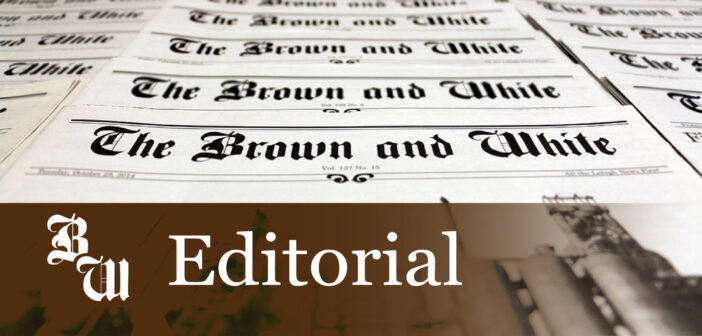You swipe left or right through a seemingly endless stream of faces, quickly growing accustomed to the repetitive cycle that is online dating culture. A few profiles you see have bios where people provide extra context about their dating goals and others offer brutal pick-up lines.
But, what the bio actually says is irrelevant. You’re moving too fast to read them, anyway.
Your routine is finally interrupted as the long-awaited “match” notification appears on your screen. The validation excites you as you click through your potential suitor’s profile.
Pictures of them alone, pictures of them with friends, pictures of them with their dog or holding a fish.
Once you get to photo number five, however, you stop in your tracks. Their hair looked weird in picture number four. You return to the main feed and continue swiping, hopeful for yet another match.
Whether we’d like to admit it or not, this routine is common among college students navigating the dating scene.
From Tinder to Hinge, dating apps are becoming an increasingly prominent part of campus culture. We are used to having a never-ending assortment of “faces” at our fingertips — this easy access leaves us with only one simple job: choosing to swipe right or left.
And for those of us who do swipe right — it’s unlikely that we will respond to a message from our match anyway.
These apps have gamified the dating process, in a sense. We “play” by swiping, and “win” when we receive a match. Once we achieve our goal, we continue playing until we win again.
While this concept may sound cynical, it isn’t to say there aren’t advantages to using dating apps. One of them is extended reach.
Prior to these online dating options, people were pretty much only exposed to those who ran in similar social circles. These apps encourage users to widen their dating pools, sometimes even allowing them to customize settings by proximity.
Some dating apps also provide filters — from age to religion — allowing users to immediately weed out people they don’t think they would mesh with. This can be beneficial in helping people narrow down the vast options.
Even so, one thing is clear: the dating process isn’t the same as it used to be.
Many parents share anecdotes describing their romantic college endeavors decades ago. Regardless of whether their experiences ended in heartbreak or marriage, they seem to have one thing in common: a sense of authenticity.
Today, however, these outcomes seem somewhat unrealistic.
Many of us feel a sort of pressure to find “the one” over these short four years. But how can we expect to find the love of our life when we are evaluating someone based on five photos?
One would assume that, by its title, The Marriage Pact would be a bit less surface level.
The Marriage Pact is a “research-backed” questionnaire that has gained major traction on college campuses, including Lehigh’s. The survey’s goal is to “tell you your most compatible backup plan on your campus, down to the percent.”
Participants are asked a series of questions about their preferences, from demographic questions to more introspective, personality-related ones rated on a scale of strongly disagree to strongly agree. Then, they are asked to rank which of the questions they consider “most important.”
After completing the survey, participants first receive their match’s initials, followed by their match’s full name and compatibility percentage. The pact essentially does all the dirty work for you, even providing you with your match’s email address to reach out to them.
Upon receiving the name, however, the majority of takers don’t blindly email the person they matched with — they look them up on social media.
Even after answering an extensive list of questions and being “delivered” someone you are algorithmically compatible with, what you see in a tiny Instagram profile picture is worth more.
We aren’t providing any “solutions” because this isn’t necessarily a “problem.” It’s more so a matter of acknowledging what you value and what you’re looking for.
If the profile picture is most important to you, that’s perfectly fine, maybe just accept the reality that that pursuit may not end in a soulmate connection. If personality compatibility matters most, that’s fine, too. Either way, good luck, because the pool of hopeless romantics seems to be shrinking on college campuses.






Comment policy
Comments posted to The Brown and White website are reviewed by a moderator before being approved. Incendiary speech or harassing language, including comments targeted at individuals, may be deemed unacceptable and not published. Spam and other soliciting will also be declined.
The Brown and White also reserves the right to not publish entirely anonymous comments.
1 Comment
“Even so, one thing is clear: the dating process isn’t the same as it used to be.” Amen to that, nothing in this editorial rings a bell. Then again “rings a bell” may not be relevant to the editorial staff. I am reminded of Quasimodo jokes.